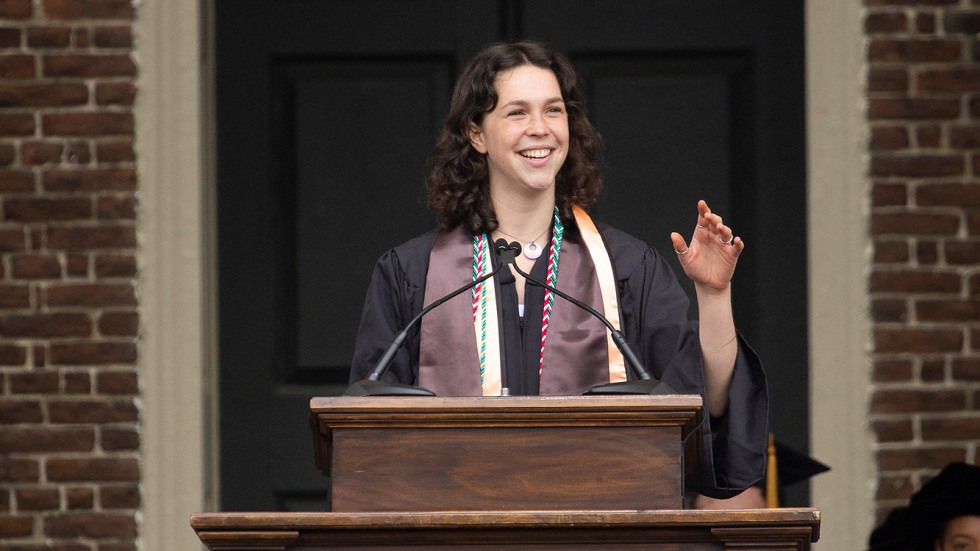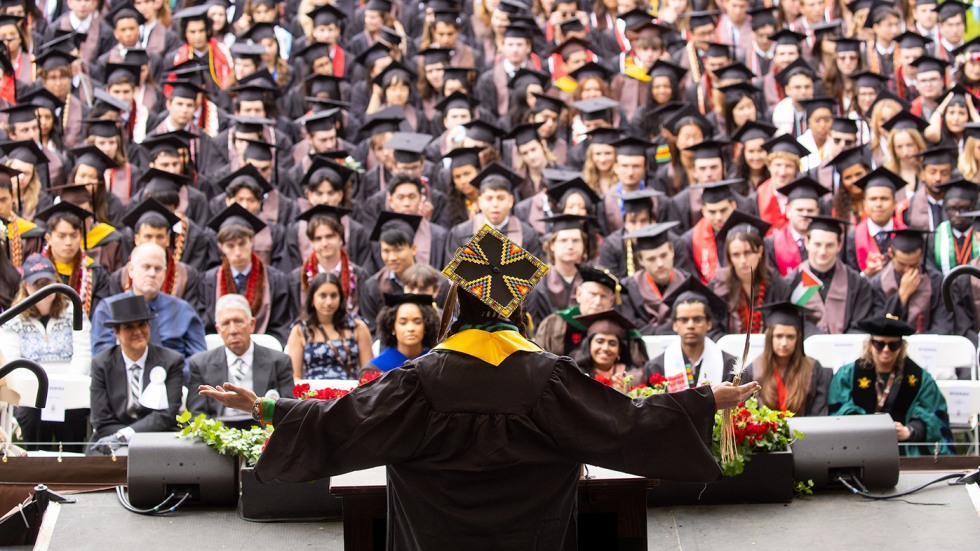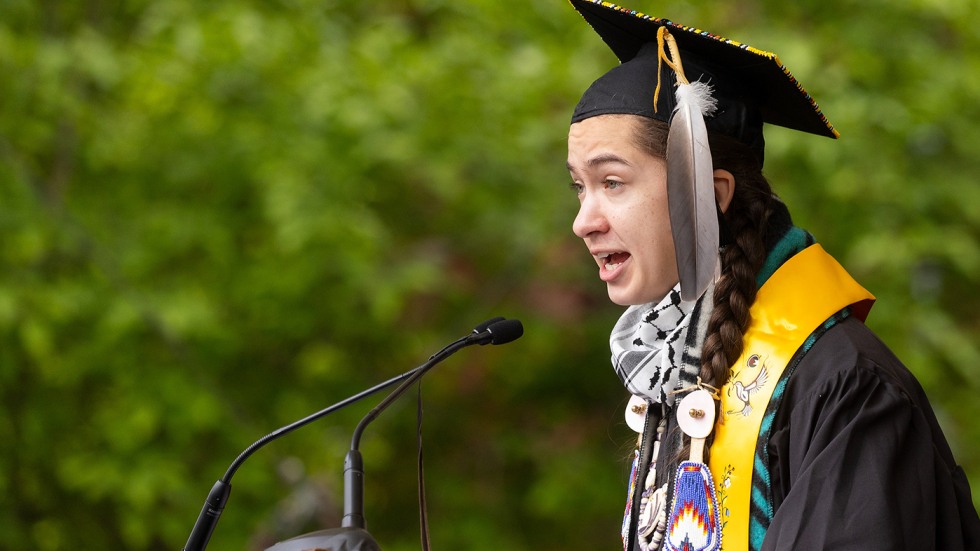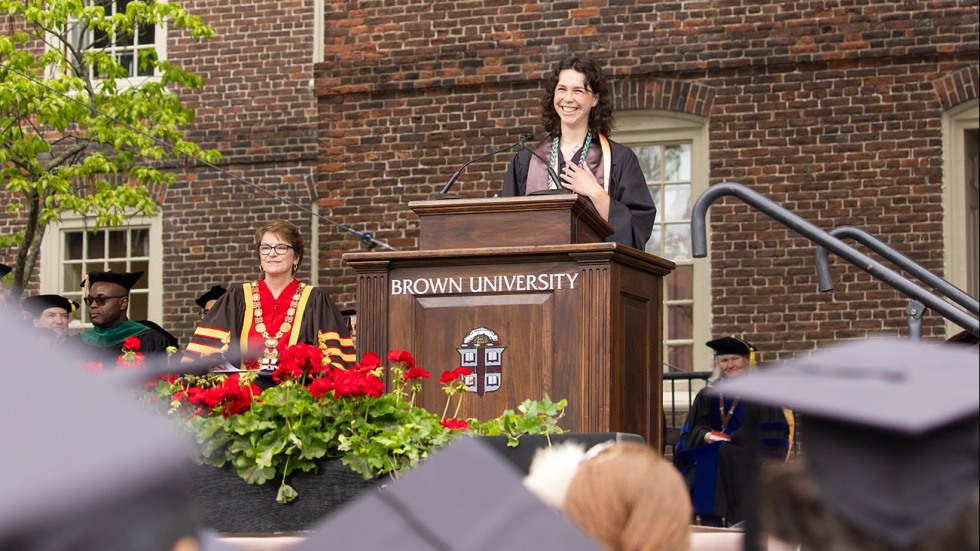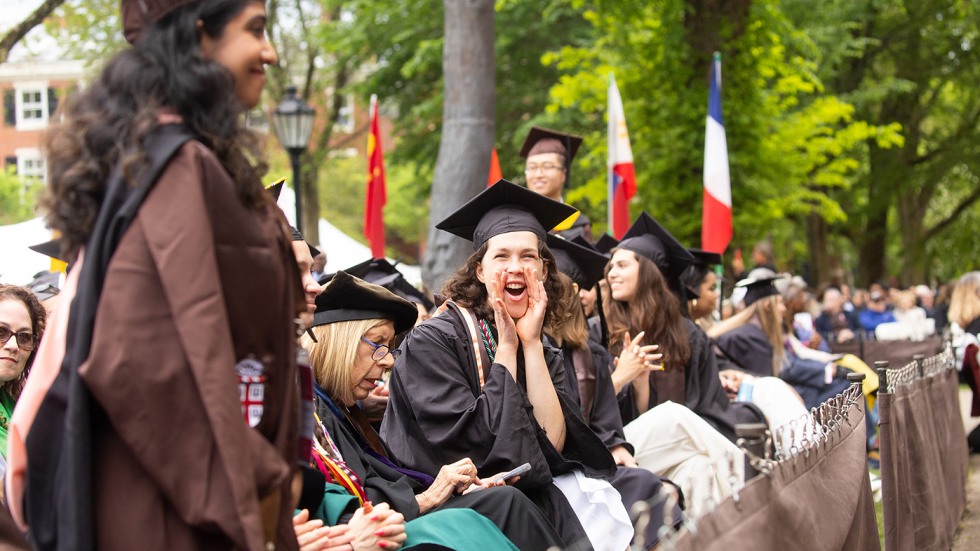PROVIDENCE, R.I. [Brown University] — For Class of 2025 graduate Aliza Kopans, Brown University’s College Green is much more than a lush expanse of grass and trees adorned with public art and framed by iconic buildings. More importantly, the green is a space to build community, cultivate joy, support tradition and help Brown undergraduates achieve balance and rejuvenation.
“It is here we have formed friendships that will blossom far beyond today — people who challenge our views and celebrate our wins, patch us up when we fall, and love us even when we’re not at our best,” Kopans told her graduating classmates on Sunday, May 25. “Rooted in support, the communities we’ve created here strengthen our resilience, perseverance and well-being.”
In separate Commencement addresses on that very College Green, in front of thousands of teachers, mentors, friends, family members and guests, both Kopans and fellow senior orator Nkéke Harris celebrated the Class of 2025’s resilience, growth and capacity for change. Each encouraged graduates to approach life after Brown with authenticity, openness, hope and fearlessness.
“In these four years, I have seen what it means to be united in all of our glorious differences and humble sameness,” Harris said. “In learning alongside and from the students and the faculty and the staff of this university, I found brightness once again.”

